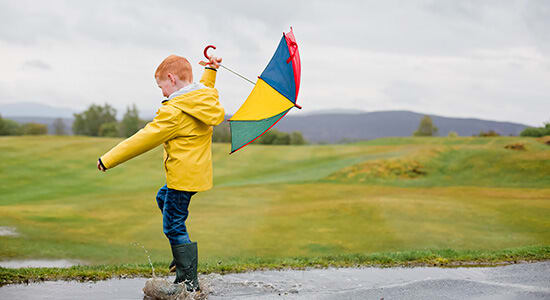Pronounce The German R Right (Tips, Audio For Both R Sounds)
October 31, 2022

There are two ways to pronounce the German R - a gargling sound and a barely-there sound. The sounds are like this:
| Example | |||
|---|---|---|---|
| R Sound | German | English | |
| gargling | rot | red | |
| barely-there | Wasser | water | |
The gargling sound is made when R appears at the beginning of a word or in front of a vowel. When R comes at the end of a word or in front of a consonant, R makes the barely-there sound.
Neither pronunciation has an equivalent sound in English. However, with practice, you can learn how to pronounce the German R.
1. Why is the R sound in German important?

In fact, the letter R occurs in 35% of the most frequently used words in German. Want to use the subjects “we (wir)” or “he (er)”? You'll need the letter R. Want to connect your thoughts using “or (oder)” and "but (aber)"? You’ll need the letter R.
In addition to being frequently used, the R pronunciations contribute to the unique fabric of the German language. This is because neither R pronunciation has an equivalent sound in English. So, when you correctly pronounce R, you are one step closer to sounding like a native German speaker.
2. How do I make the gargling sound for R?
The gargling R is clearly pronounced. In standard German, the pronunciation is a rasping, throat-clearing sound, like a less extreme version of the sound made when gargling. Note that the gargling R is a rather short sound. Avoid the common temptation to exaggerate the gargling R sound.
The gargling R is technically called the consonantal R. You can hear the gargling R in many important words:
| Example | In Context | ||
|---|---|---|---|
| German | English | German | English |
| rot | red | Es ist rot | It is red |
| reisen | to travel | Sie reisen | They travel |
| fahren | to drive | Sie fahren das Auto | They drive the car |
| die Jahre | the years | Sie ist zehn Jahre alt | She is ten years old |

The gargling R sound does not exist in English, so here are some pointers to keep in mind as you practice producing this sound:
- Pretend to gargle; put a sound on it
- Think of the guttural CH sound made in the back of your throat for German words like "auch." For the German R, it's a similar mouth movement, but with a shorter sound and less pressure
3. How do I make the barely-there R sound?
The second R pronunciation, technically called the vocalic R, is somewhat easier. Essentially, the R is not really pronounced.
The barely-there R occurs in many high-frequency words:
| Example | In Context | ||
|---|---|---|---|
| German | English | German | English |
| Wasser | water | Ich habe Wasser | I have water |
| der | the (M) | Der Mann ist nett | The man is nice |
| werden | to become | Sie werden gehen | They will leave |
| lernen | to learn | Sie lernen Deutsch | They learn German |
The barely-there R sound does not exist in English, so here’s a fun tip to help you produce this unique sound
- Think of a British accent or even an east coast accent in the U.S., where the R is not always as strongly pronounced at the end of a word
4. How do I know which R pronunciation to use?
With a sense of how to make both R sounds, you are well on your way to mastering this important letter.
Now, you may be wondering – When should I try gargling versus channeling an east coast accent? Well, if that question makes sense to you, then welcome to the club! You must be a true German learner.
To determine which R pronunciation to go with, follow this general rule of thumb. When R starts a word or precedes a vowel, clearly pronounce the R - making the gargling sound. When R ends a word or precedes a consonant, go with the barely-there sound.
| Example | |||
|---|---|---|---|
| R Position | Sound | German | English |
| start | gargling | der Regen | the rain |
| end | barely-there | er | he |
| pre-vowel | gargling | hören | to hear |
| pre-consonant | barely-there | der Herd | the stove |

With practice, you will develop a feel for what sounds right.
5. What should I do when a word contains more than one R?
Sometimes, you'll see more than one R occurring in a single word. The pronunciation rules will still hold. Break the word down and determine the pronunciation for each R you see.
Take the word "erneuern," meaning "to renew." Both R letters come before a consonant, so both are barely there.
We can also have the two different R pronunciations in one word, like in "verlieren," meaning "to lose." The first R is in front of a consonant, so it's barely pronounced. The second R is in front of a vowel, so it's clearly pronounced as a gargling sound.
| Example | R Sound | ||
|---|---|---|---|
| German | English | First R | Second R |
| erneuern | to renew | barely-there | barely-there |
| verlieren | to lose | barely-there | gargling |
6. Are there any regional variations in how R is pronounced?
Yes! You will encounter regional variations in how the letter R is pronounced. This is an additional factor that makes the R challenging for many new learners.
In Southern Germany, some people will do a rolled R sound, as opposed to a gargling sound. So, at the beginning of words and in front of vowels, you will hear both the gargling R sound and the rolled R sound, depending on regional dialects.

7. How can I improve my pronunciation of the German R?
With practice, you can learn to make the gargling sound and the barely-there sound, which are both so important in German.
- Pursue an initial goal: When you learn a new R word, focus on determining whether you need a gargling R or a barely-there R. Then make that sound as best you can. Take comfort that you will still be understood, no matter which R sound you go with.
- Listen actively: Listen for the R used in conversation around you. When you hear the sound, see if you can identify which R pronunciation was used. Think about why that pronunciation was used in this case. Try to repeat the word out loud.
- Get feedback on your pronunciation to improve: Try the pronunciation series in Kleo, featuring top German experts. In these interactive video lessons, you can receive real-time feedback on your pronunciation. YouTube star Feli from Germany even hosts a popular lesson on the German R, sharing her best tips and providing chances to practice R words with her - until you get them just right.
- Practice the R sound in context: The best way to build muscle memory is by using new sounds in real-life situations. Good news! Some of Kleo’s most popular interactive video lessons prominently feature the R sound. For example, meet up with your German friends at a dinner party as they explore the gender of nouns and use the appropriate articles, including "der/the" for masculine nouns. Or join the gang in conjugating the regular verb "lernen/to learn." This is a great way to practice speaking German in context.
8. What are other German sounds that do not exist in English?
Since the two R pronunciations do not exist in English, working to master these sounds is challenging and rewarding. There are more German sounds that do not have an equivalent in English.
For example, the U umlaut (Ü) makes the sound like you've smelled something unpleasant. Also, the O umlaut (Ö) makes the sound like you're disgusted. For the German CH, you can hiss like a cat or cough something up. Fun, right? You can practice all of these in Kleo's interactive pronunciation lessons.